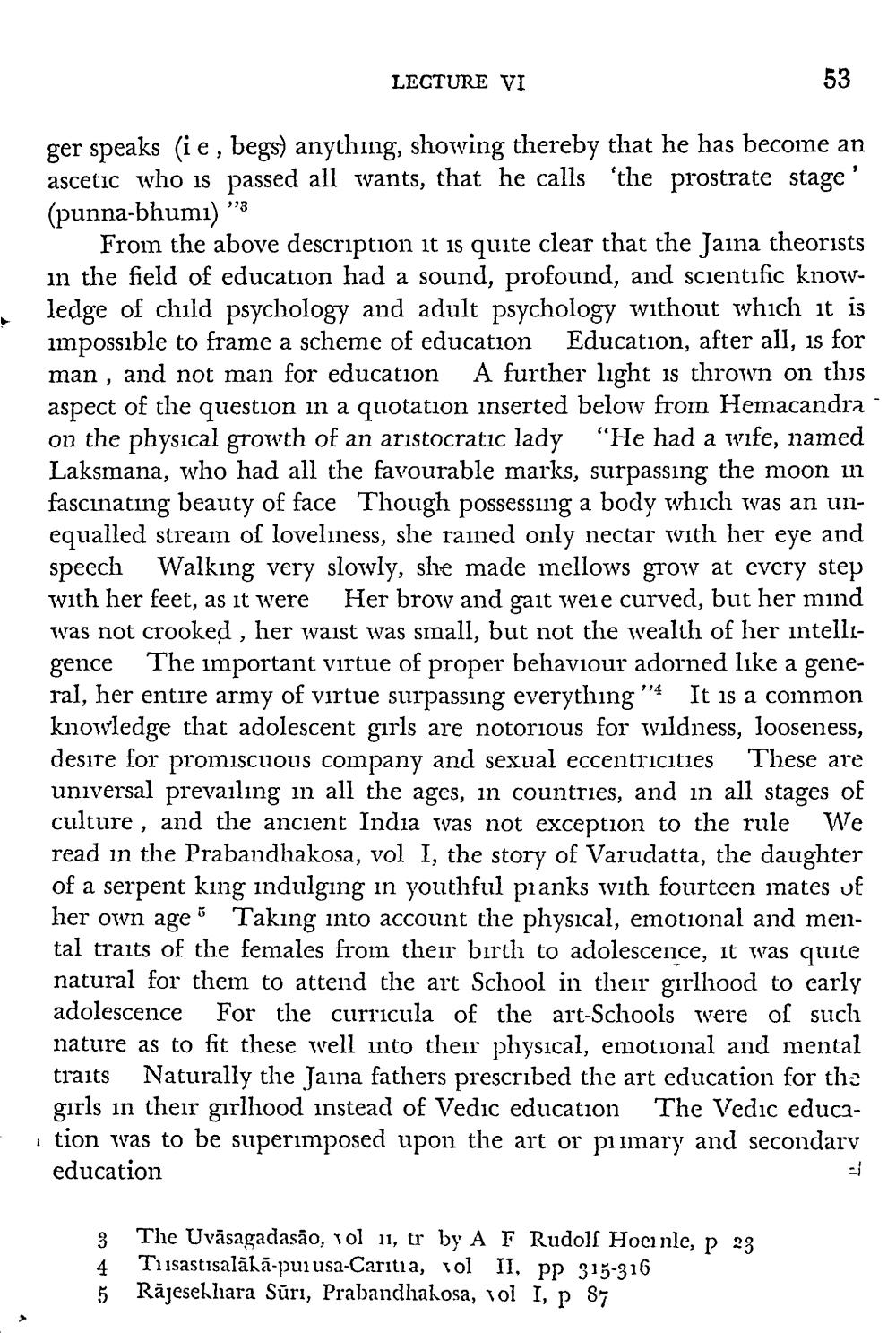________________
LECTURE VI
53
ger speaks (i e, begs) anything, showing thereby that he has become an ascetic who is passed all wants, that he calls 'the prostrate stage' (punna-bhumi) "3
From the above description it is quite clear that the Jaina theorists in the field of education had a sound, profound, and scientific knowledge of child psychology and adult psychology without which it is impossible to frame a scheme of education Education, after all, is for man , and not man for education A further light is thrown on this aspect of the question in a quotation inserted below from Hemacandra - on the physical growth of an aristocratic lady "He had a wife, named Laksmana, who had all the favourable marks, surpassing the moon in fascinating beauty of face Though possessing a body which was an unequalled stream of loveliness, she rained only nectar with her eye and speech Walking very slowly, she made mellows grow at every step with her feet, as it were Her brow and gait weie curved, but her mind was not crooked , her waist was small, but not the wealth of her intelligence The important virtue of proper behaviour adorned like a general, her entire army of virtue surpassing everything"4 It is a common knowledge that adolescent girls are notorious for wildness, looseness, desire for promiscuous company and sexual eccentricities These are universal prevailing in all the ages, in countries, and in all stages of culture, and the ancient India was not exception to the rule We read in the Prabandhakosa, vol I, the story of Varudatta, the daughter of a serpent king indulging in youthful pranks with fourteen inates of her own age 5 Taking into account the physical, emotional and mental traits of the females from their birth to adolescence, it was quite natural for them to attend the art School in their girlhood to early adolescence For the curricula of the art-Schools were of such nature as to fit these well into their physical, emotional and mental traits Naturally the Jaina fathers prescribed the art education for the girls in their girlhood instead of Vedic education The Vedic education was to be superimposed upon the art or primary and secondary education
ܘܝ
The Uvāsagadasão, vol 11, tr by AF Rudolf Hocinle, p 33 Tusastisalāhā-pui usa-Caritia, vol II, pp 315-316 Rājesehliara Sūri, Prabandhakosa, vol I, p 87
ܕ n
5




